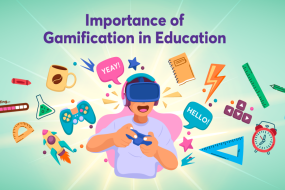
In this ever-evolving digital era, virtual classrooms have emerged as a transformative force, revolutionizing the landscape of online education. By seamlessly bridging the gap between physical and virtual learning environments, virtual classrooms provide students and educators with an immersive and interactive educational experience. This comprehensive guide will explore the intricacies of virtual classrooms, shed light on their benefits, and provide actionable tips for both learners and instructors.
Unleashing the Potential of Virtual Classroom Software
What are Virtual Classrooms?
Virtual classrooms are sophisticated online platforms that enable remote teaching and learning, simulating the dynamics of a traditional classroom through a web-based interface. With the aid of cutting-edge virtual classroom software, educators can conduct real-time lessons, engage with students, and foster collaborative interactions, regardless of geographical boundaries.
Embracing the Benefits of Virtual Classrooms
Virtual classrooms offer a myriad of advantages, propelling the growth of online education. Let’s explore some key benefits:
- Flexibility and Accessibility: With virtual classrooms, students can access educational content anytime, anywhere, eliminating the constraints of physical proximity. This flexibility empowers learners to tailor their study schedules to accommodate personal commitments and diverse time zones.
- Enhanced Engagement: Through interactive features such as live chats, video conferencing, and virtual whiteboards, virtual classrooms foster an engaging learning environment. These tools encourage active participation, collaboration, and real-time feedback, leading to heightened student engagement and knowledge retention.
- Cost-effectiveness: Virtual classrooms eliminate the need for costly infrastructure, commute expenses, and accommodation fees associated with traditional learning environments. Consequently, learners can access high-quality education at a fraction of the cost, democratizing educational opportunities for a broader audience.
- Personalized Learning: Virtual classrooms enable instructors to tailor their teaching methods and materials to meet the individual needs of students. Adaptive learning algorithms and personalized assessments facilitate customized learning paths, catering to each learner’s unique strengths, weaknesses, and learning pace.
Actionable Tips for Maximizing the Virtual Classroom Experience
To make the most of virtual classrooms, both learners and educators can employ the following actionable tips:
- Foster Communication and Interaction
In a virtual classroom, effective communication is paramount. Learners should actively participate in discussions, ask questions, and collaborate with peers. Meanwhile, instructors must create a supportive environment that encourages dialogue, ensuring every student feels valued and heard. Utilizing features like breakout rooms for small group activities can enhance interaction and foster meaningful connections.
- Create Engaging Multimedia Content
To captivate learners’ attention, instructors should leverage multimedia elements such as videos, infographics, and interactive presentations. These visually appealing resources break the monotony of text-heavy materials, making the learning process more enjoyable and immersive. Moreover, using storytelling techniques and real-life examples can help contextualize complex concepts and enhance comprehension.
- Leverage Gamification and Interactive Assessments
Gamification adds an element of fun and competitiveness to the virtual classroom. Instructors can design interactive quizzes, virtual simulations, and gamified learning modules to motivate students and reinforce their understanding. Gamified assessments not only make the learning process more enjoyable but also provide instructors with valuable insights into each student’s progress and areas for improvement.
Frequently Asked Questions (FAQs)
Q1: Can virtual classrooms accommodate large student populations?
A1: Absolutely! Virtual classrooms can accommodate a significant number of students, often scaling to hundreds or even thousands. Advanced virtual classroom software employs robust infrastructure and bandwidth capabilities to ensure seamless connectivity and smooth interactions, irrespective of the class size.
Q2: Are virtual classrooms suitable for all subjects and grade levels?
A2: Yes, virtual classrooms are highly versatile and can cater to a wide range of subjects and grade levels. From mathematics and science to humanities and arts, educators can adapt virtual classrooms to suit the requirements of various disciplines and educational levels.
Q3: How can educators assess students’ progress in virtual classrooms?
A3: Virtual classrooms provide diverse assessment options for educators. Through interactive quizzes, assignments, discussions, and project submissions, instructors can gauge students’ comprehension, critical thinking skills, and subject mastery. Additionally, virtual classrooms often integrate learning analytics tools that offer valuable insights into student performance, facilitating targeted interventions.
Q4: Can virtual classrooms offer a personalized learning experience?
A4: Absolutely! Virtual classrooms leverage adaptive learning technologies to deliver personalized educational experiences. By analyzing individual student data, virtual classroom software can recommend tailored learning paths, adaptive assessments, and supplementary resources to address each learner’s specific needs and optimize their learning outcomes.
Q5: What technical requirements are necessary to participate in a virtual classroom?
A5: Participating in a virtual classroom requires a stable internet connection, a computer or mobile device, and compatible web browsers. It is recommended to use headphones with a built-in microphone for optimal audio quality during virtual discussions and video conferences.
Conclusion
Virtual classrooms have ushered in a new era of education, redefining the boundaries of traditional learning. By embracing the flexibility, engagement, and cost-effectiveness of virtual classrooms, learners can unlock a world of knowledge at their fingertips. Similarly, educators can harness the power of virtual classroom software to facilitate dynamic and personalized learning experiences for their students. As the virtual classroom landscape continues to evolve, it is essential to adapt and embrace these innovative tools to shape the future of education. So, step into the virtual realm, and embark on a transformative educational journey like never before!
Advertisement







